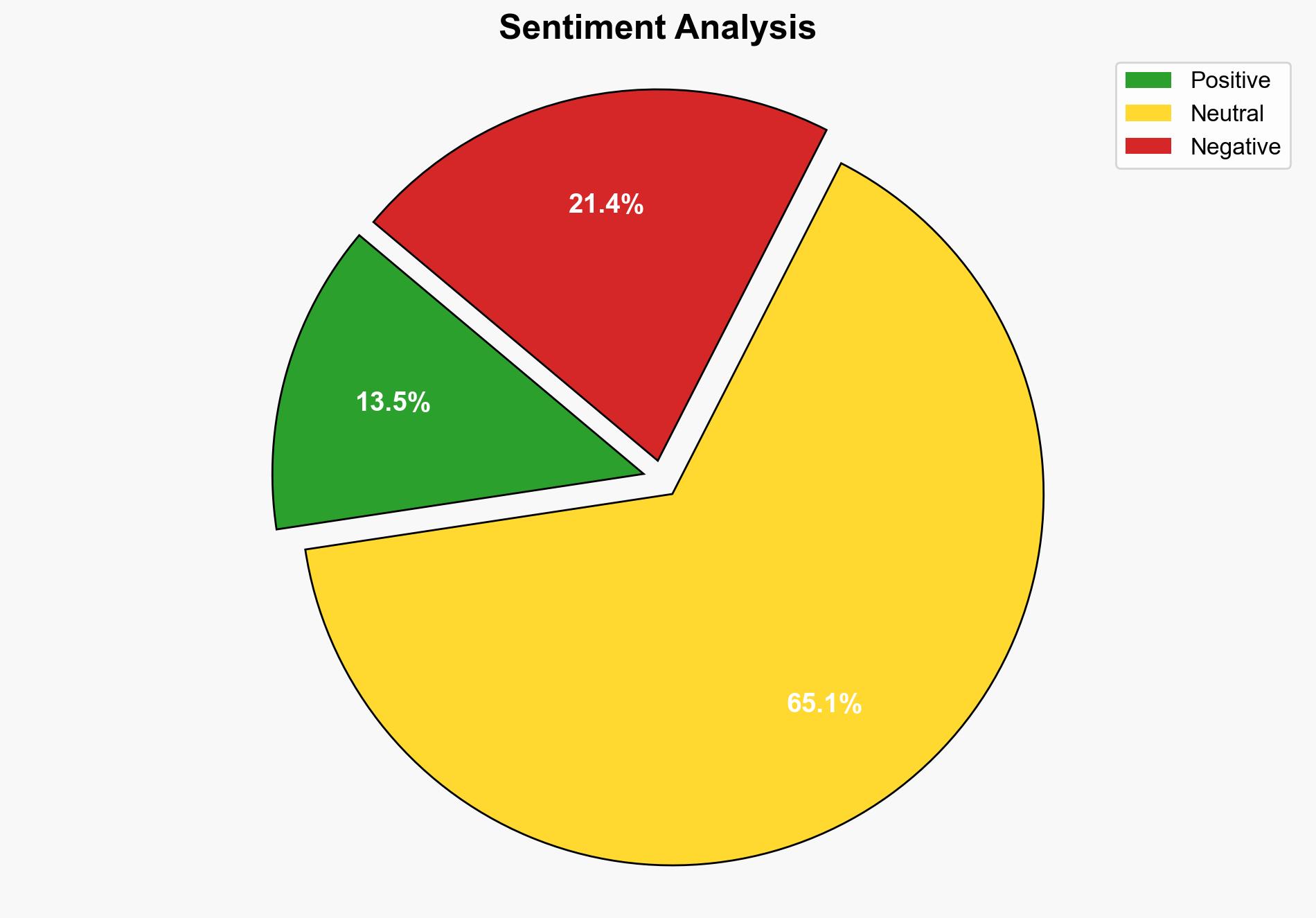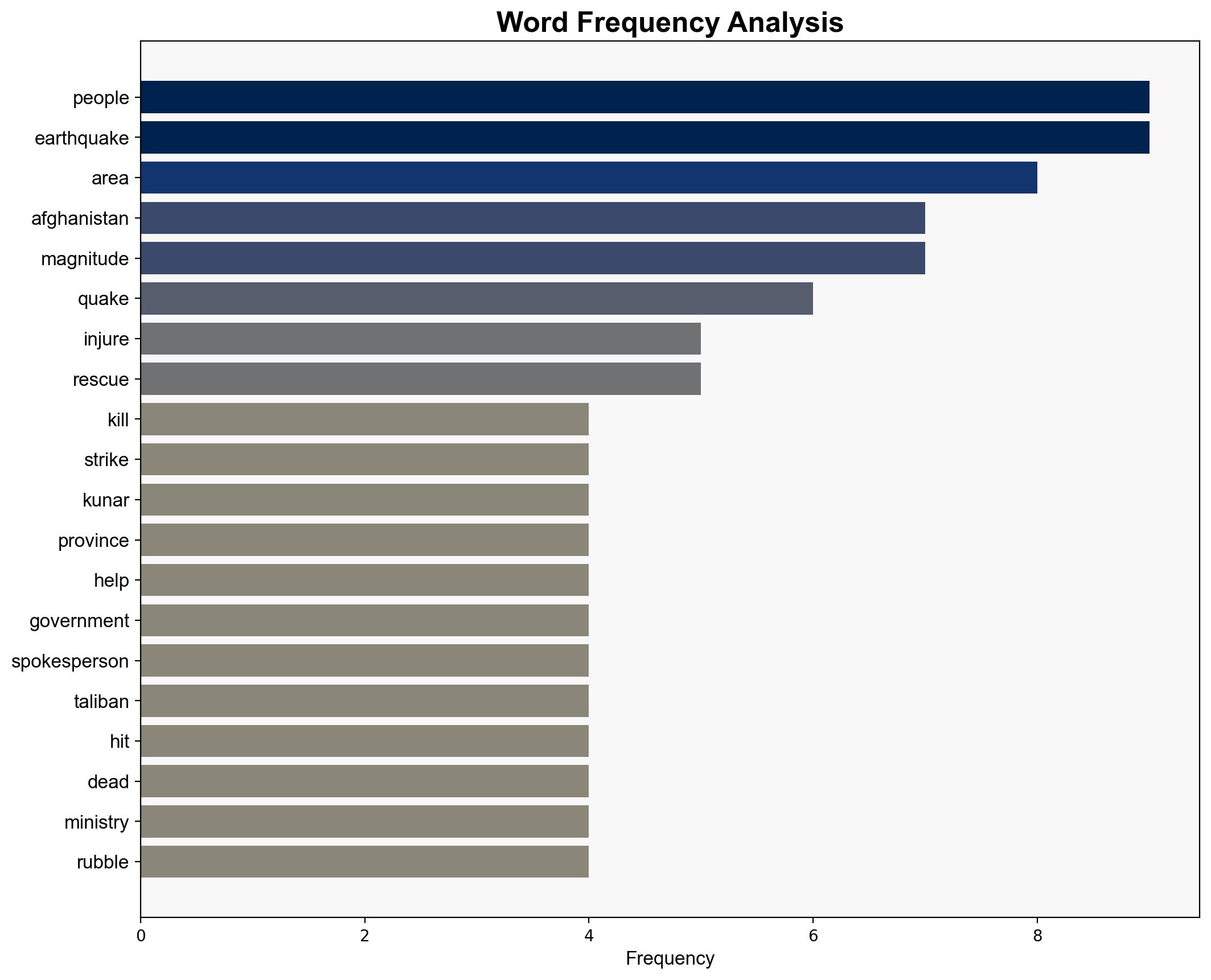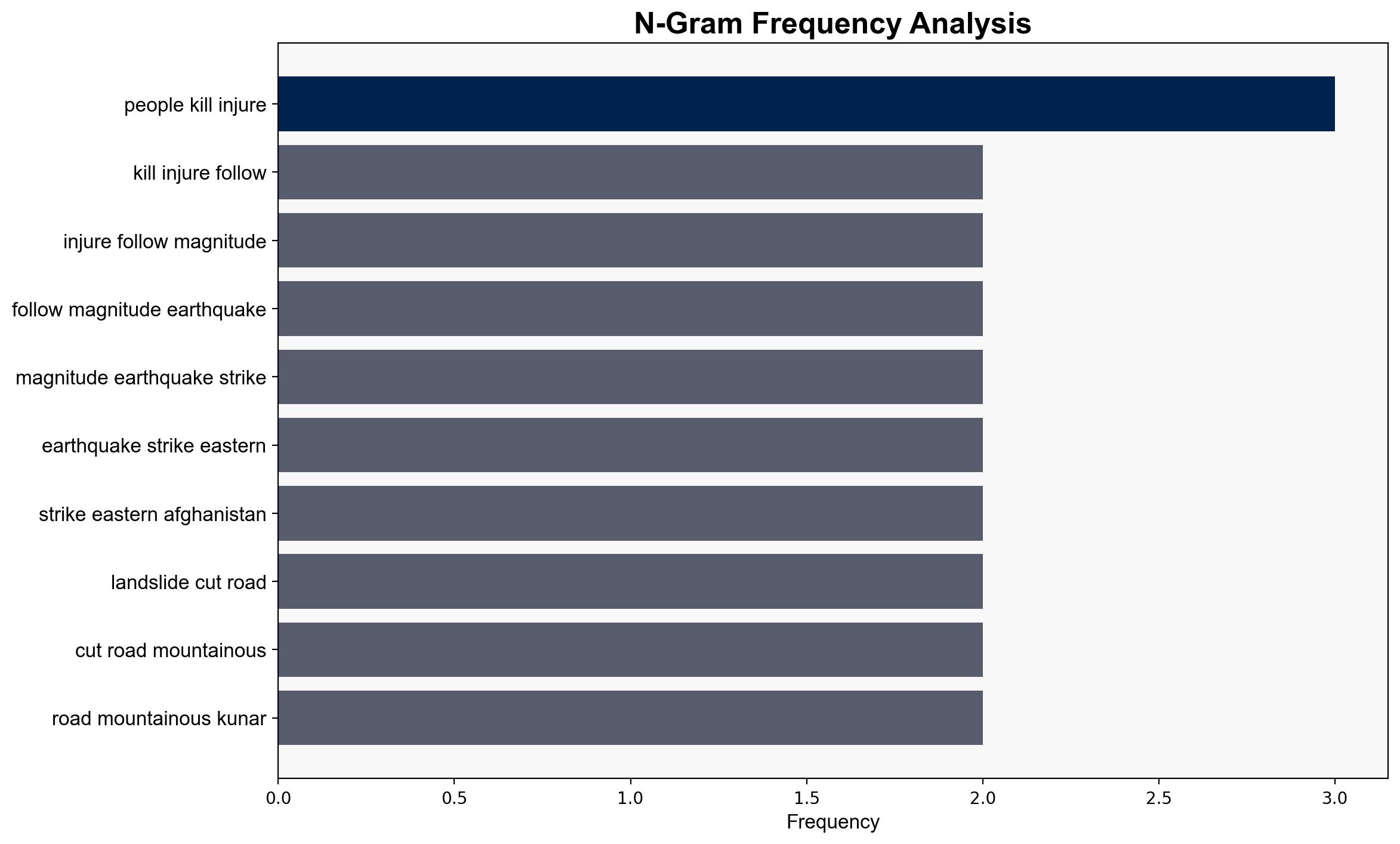Breaking Hundreds feared dead in Afghanistan earthquake – ABC News (AU)
Published on: 2025-09-01
Intelligence Report: Breaking Hundreds feared dead in Afghanistan earthquake – ABC News (AU)
1. BLUF (Bottom Line Up Front)
The most supported hypothesis is that the earthquake in eastern Afghanistan has caused significant casualties and infrastructure damage, hampering rescue efforts and necessitating international aid. Confidence level: Moderate. Recommended action: Immediate coordination with international humanitarian organizations to facilitate aid delivery and support rescue operations.
2. Competing Hypotheses
Hypothesis 1: The earthquake has resulted in a high number of casualties and significant infrastructure damage, requiring urgent international assistance to manage the crisis effectively.
Hypothesis 2: The earthquake’s impact is less severe than reported, with local authorities capable of managing the situation without substantial external intervention.
Using ACH 2.0, Hypothesis 1 is better supported due to consistent reports of high casualties, infrastructure damage, and appeals for international aid. Hypothesis 2 lacks substantial evidence and contradicts the reported challenges in rescue operations.
3. Key Assumptions and Red Flags
– Assumption: The reported casualty figures and infrastructure damage are accurate and not exaggerated for political or financial gain.
– Red Flag: Discrepancies in casualty figures between local and international reports could indicate information manipulation.
– Blind Spot: Limited access to remote areas may result in underreported figures and delayed assessments.
4. Implications and Strategic Risks
The earthquake exacerbates Afghanistan’s existing humanitarian crisis, potentially leading to increased instability. The Taliban’s governance capacity may be further tested, impacting regional security dynamics. A lack of timely international response could worsen the humanitarian situation and strain geopolitical relations.
5. Recommendations and Outlook
- Coordinate with international humanitarian organizations to expedite aid delivery and support rescue operations.
- Monitor the situation for potential escalation in humanitarian needs and regional instability.
- Best-case scenario: Effective international aid mitigates the crisis impact. Worst-case scenario: Delayed response leads to increased casualties and regional instability. Most likely scenario: Gradual improvement with international support.
6. Key Individuals and Entities
– Sadiqullah, a resident of the affected area, highlights the urgent need for assistance.
– Najibullah Hanif, provincial head, indicates that casualty figures are likely to rise.
– Sharafat Zaman and Abdul Maten Qanee, spokespersons for the health and defense ministries, respectively, appeal for international help.
7. Thematic Tags
national security threats, humanitarian crisis, regional focus, disaster response





